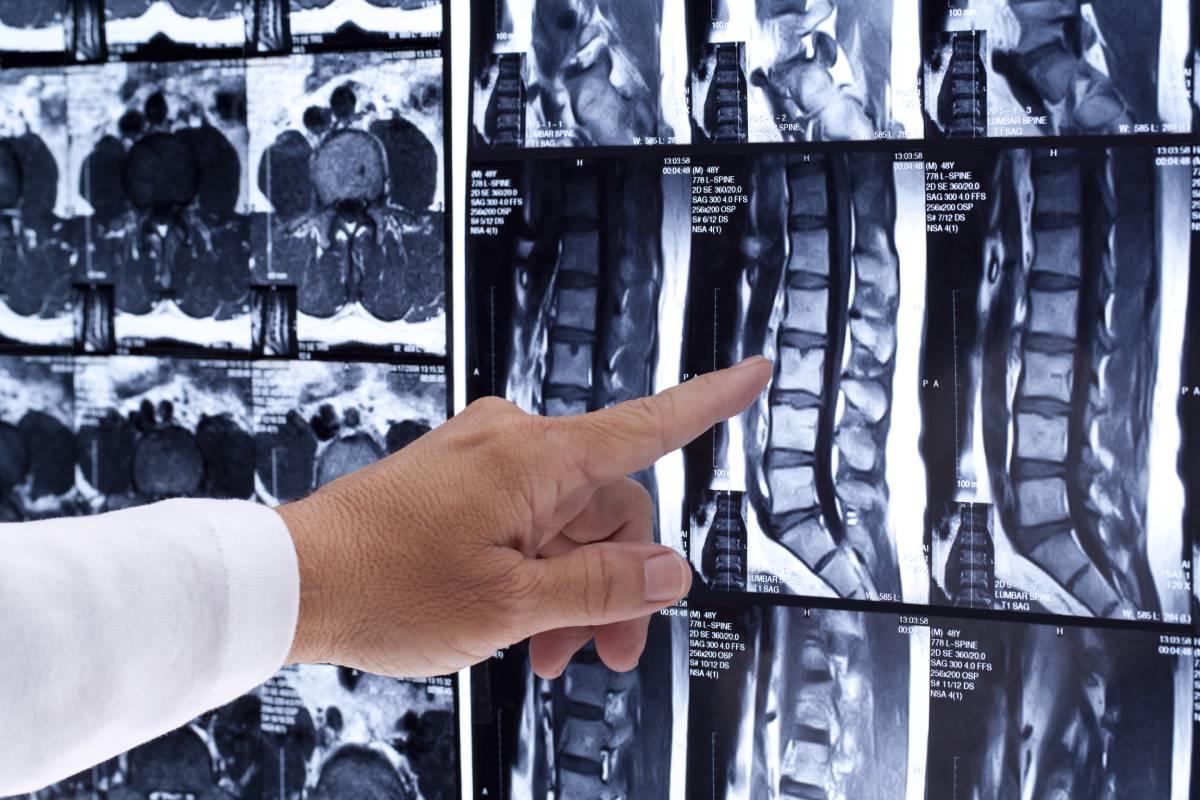Interventional pain management (IPM) is defined by the American Society of Interventional Pain Physicians as the discipline of medicine devoted to the diagnosis and treatment of pain-related disorders.1 Interventional pain management techniques, which are typically used to treat pain of the face, knees, lower back, and neck, include injection of nerve blocks, implantation of intrathecal pumps, electrical stimulation, and the use of heat generated by radiofrequency to destroy the nerves causing pain.2 This last treatment, known as radiofrequency (RF) rhizotomy, RF neurotomy, or RF ablation, is a non-surgical and minimally invasive approach that effectively provides long-term pain relief.
RF treatment typically beings with a patient receiving a local anesthetic to numb the treatment area. Using a fluoroscope to obtain real-time x-ray images, a physician will insert a thin needle with an electrode tip into the offending region. A radiofrequency current is then passed through the needle to create a lesion that destroys the portion of the nerve responsible for transmitting pain signals. The ablated nerve can grow back 6-12 months after the procedure, at which point pain may recur; to prevent this, physical therapy is usually recommended after treatment to remedy the underlying issues that may have caused pain in the first place.2
Two main types of RF treatment exist: continuous RF, which uses high-frequency alternating current to heat the probe to around 70 ˚C so that it can burn a precise region of tissue, and pulsed RF, which uses short, high-voltage bursts of current that do not allow the probes to attain a temperature sufficient for burning tissue.3 The mode of action of pulsed RF is not entirely clear and is currently under investigation. In 2008, Sluijter et al.4 offered what is now a leading theory for the mechanism of pulsed RF.5 They hypothesized that pulsed RF has a dual effect: in smaller joints, the current stimulates the nociceptive nerve endings, which explains why pulsed RF often induces immediate pain relief when applied in sites such as the atlanto-axial joint (located in the upper part of the neck between the first two cervical vertebrae). The geometry of larger joints, such as the knee and shoulder, does not allow for stimulation of the nociceptive nerve endings, and as such immediate pain relief is usually not felt. Instead, patients report feeling gradual pain relief, which the authors suggest is caused by the action of electric fields on immune cells and the subsequent production of anti-inflammatory cytokines. Sluijter et al. acknowledge that their theory requires clinical proof.
Cooled radiofrequency ablation (CRFA) is a novel version of continuous RF that has gained popularity for those suffering from knee osteoarthritis and who might otherwise have needed a total knee arthroplasty to attain adequate pain relief.6 In CRFA, cooled water is circulated through the probe tip to lower its temperature and distribute heat more evenly to the surrounding tissues, which provides more extensive denervation and reduces the likelihood of missing the target nerve.7 While only few studies analyzing the benefits of CRFA have been conducted, the existing literature seems to suggest that CRFA may be more effective than traditional RF,8 a sign that radiofrequency treatments and pain management in general will only improve with the passage of time.
References
1. “About ASIPP.” American Society of Interventional Pain Physicians, 8 June 2021, asipp.org/about-asipp/.
2. “Interventional Pain Management for Chronic Pain.” Practical Pain Management, 13 Apr. 2018, www.practicalpainmanagement.com/patient/treatments/interventional-pain-management/interventional-pain-management-chronic-pain.
3. Singh, Y., et al. “A Comparative Study of Continuous versus Pulsed Radiofrequency Discectomy for Management of Low Backache: Prospective Randomized, Double-Blind Study.” Anesthesia: Essays and Researches, vol. 10, no. 3, 2016, p. 602., doi:10.4103/0259-1162.186616.
4. Sluijter, M. E., et al. “Intra-Articular Application of Pulsed Radiofrequency for Arthrogenic Pain—Report of Six Cases.” Pain Practice, vol. 8, no. 1, 2008, pp. 57–61., doi:10.1111/j.1533-2500.2007.00172.x.
5. E. Sluijter, M., and F. Imani. “Evolution and Mode of Action of Pulsed Radiofrequency.” Anesthesiology and Pain Medicine, vol. 2, no. 4, 2013, pp. 139–41., doi:10.5812/aapm.10213.
6. Reddy, R. D., et al. “Cooled Radiofrequency Ablation of Genicular Nerves for Knee Osteoarthritis Pain: A Protocol for Patient Selection and Case Series.” Anesthesiology and Pain Medicine, vol. 6, no. 6, 2016, doi:10.5812/aapm.39696.
7. Kapural, L., and J. P Deering. “A Technological Overview of Cooled Radiofrequency Ablation and Its Effectiveness in the Management of Chronic Knee Pain.” Pain Management, vol. 10, no. 3, 2020, pp. 133–140., doi:10.2217/pmt-2019-0066.
8. Ciccone, T. G. “Cooled Radiofrequency Ablation Provides Pain Relief for Knee Osteoarthritis.” Practical Pain Management, www.practicalpainmanagement.com/meeting-summary/cooled-radiofrequency-ablation-provides-pain-relief-knee-osteoarthritis.
